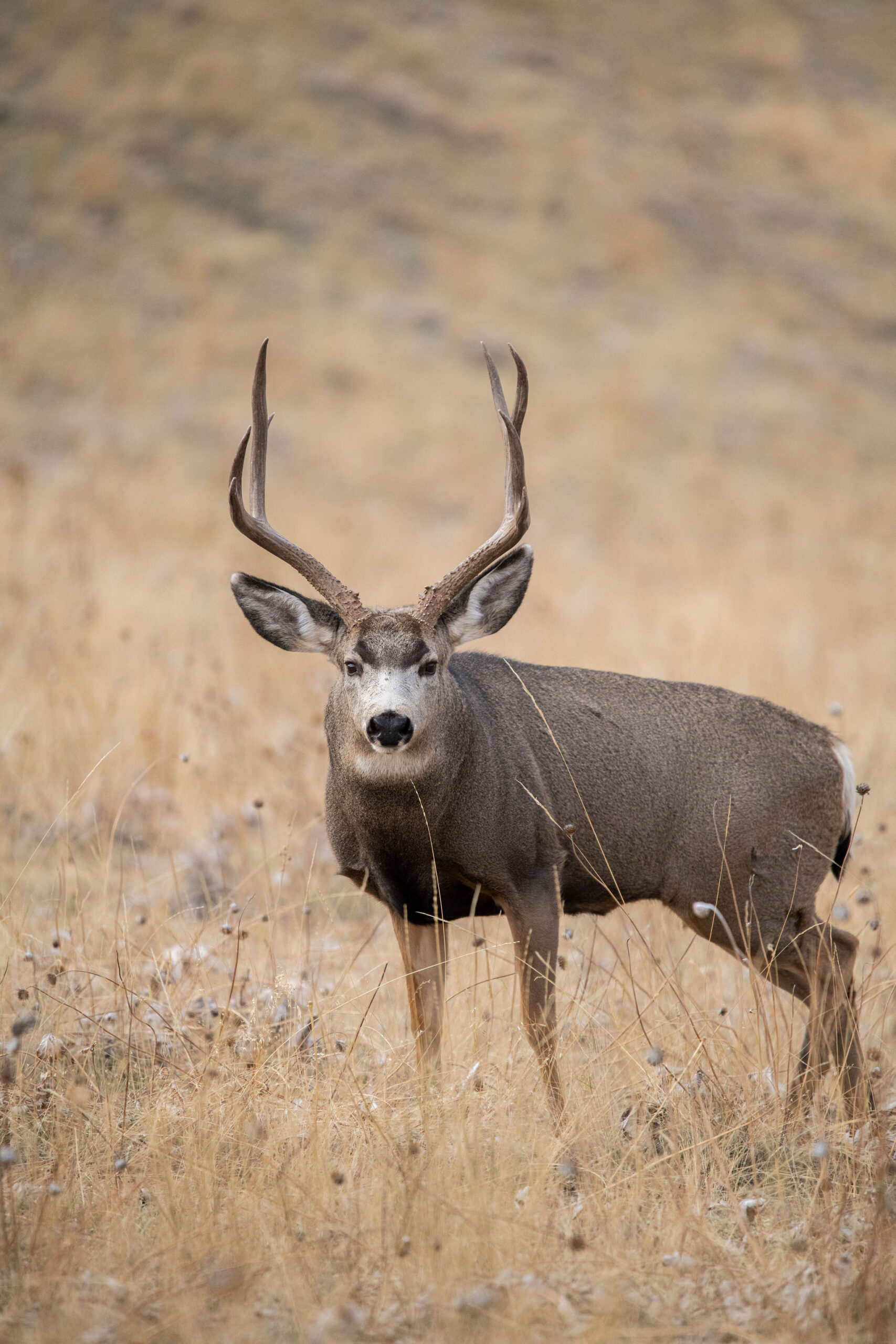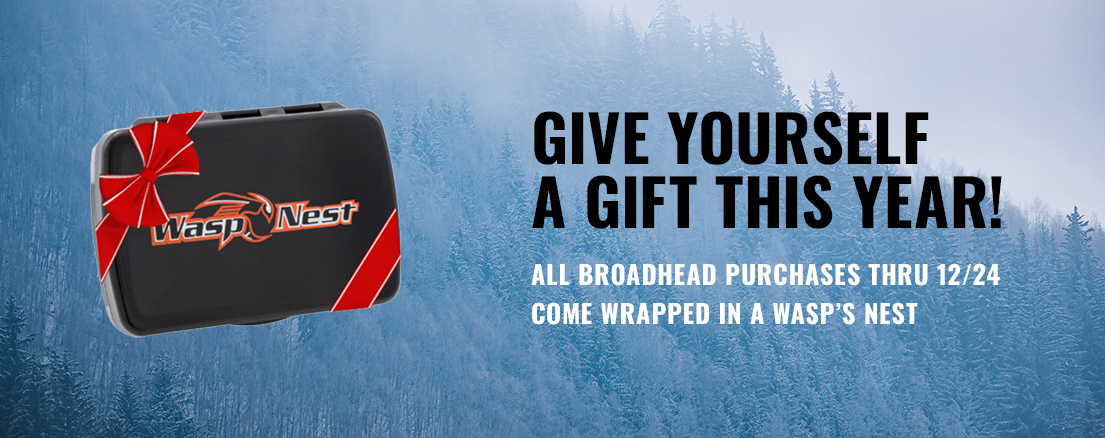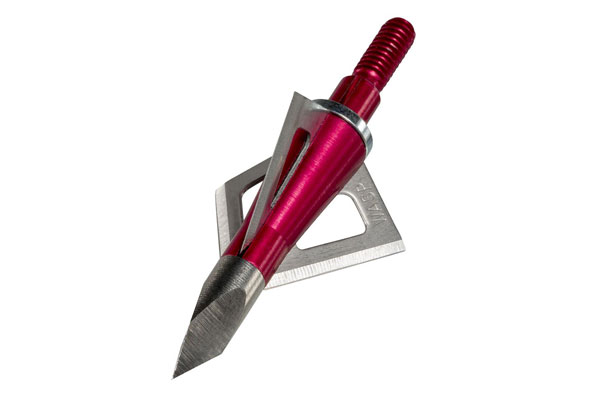Should Bowhunters Take a Quartering-to Shot?
The quartering-to bow shot might be the most controversial one in all of bowhunting. Opponents warn that the target is too small, with too much heavy bone in the way. Too many shots taken on quartering-to game result in wounded and lost animals, they say, and of course nobody wants that. Just wait for a broadside shot.
But plenty of archers counter by saying that a quartering-to bow shot is incredibly lethal if done properly with good equipment, usually resulting in an animal that’s dead within sight. They insist that bowhunters are missing out on too many easy opportunities by passing on the shot, and that most of the cautionary tales of wounded-and-lost animals from the quartering-to hit are simply the result of aiming at the wrong spot.
Both perspectives are correct. Although there is no mystery to the quartering-to shot angle, it is nonetheless a trickier shot to make than a broadside or quartering-away angle. Before you let fly on a quartering-to buck or bull, keep this advice in mind.
STOP AIMING BEHIND THE SHOULDER CREASE
Most animals lost from a quartering-to shot are hit through one lung and maybe the liver. Some are even superficially wounded on the rib cage and flank. This happens because so many bowhunters are trained to aim “behind the shoulder,” and they use the front-leg crease as a point of reference.
That’s great on a broadside shot, but bowhunters must remember that the crease itself isn’t the target —the heart and lungs are. If you’re holding behind the crease on a quartering-to angle, you’re holding on the back edge of the lungs at best. For any shot angle, bowhunters are wise to consider not where the arrow hits the animal on impact, but where it would exit after passing through. Any shot that puts the arrow exiting more than a few inches behind the opposite shoulder crease is less than ideal. That’s why, even with a mild quartering-to angle, bowhunters should aim forward of the near-side shoulder crease, not behind it. The more severe the angle becomes, the farther forward on the animal’s chest the bowhunter should hold.
WATCH OUT FOR THE SHOULDER BONES!
The sharpest quartering-to angles, like the one shown with that fine mule deer buck in the photo, do present a special challenge to bowhunters. Some of the heaviest bones in a cervid’s skeleton are in the upper front leg. The lower scapula, shoulder joint, and humerus (upper arm bone) of a big deer are all heavy enough to stop a sluggish arrow. The bones of an elk or moose are basically a brick wall to the average hunting setup. If those bones stop your arrow, you’re almost certain to lose that animal.
On severe quartering-to angles, bowhunters should think of the front leg as an obstacle that obscures the vitals, no different than a sapling tree that you might have to aim on one side or the other of in order to make the shot. And again, as the angle increases, the aiming point should move farther forward on the chest.
On this mule deer, you’d want to hold your pin on a different crease, the one between the front of the shoulder and the base of the buck’s neck. Hit that spot, and your broadhead only has to penetrate a few inches before hitting the major vessels of the pulmonary system, heart, and lungs. That buck is dead in 10 seconds.
MAKE THE RIGHT DECISION
The rub here, of course, is the size of the target. Shooting for the base of the neck, ahead of the shoulder, requires hitting a spot about the size of a softball. Most of today’s bowhunters can handle that no problem on targets out to 30 yards, but keeping a cool head on game is another matter. The maximum effective range depends on the individual bowhunter, of course, but it’s not a bad idea to half your distance for a quartering-to angle. If you’re comfortable on broadside whitetails to 30 yards, keep your quartering-to shots inside 15. And if you’re still not comfortable with the shot, then the solution is simple. Hold off, and wait for a broadside angle, which is still the best one of all.
BROADHEAD SELECTION
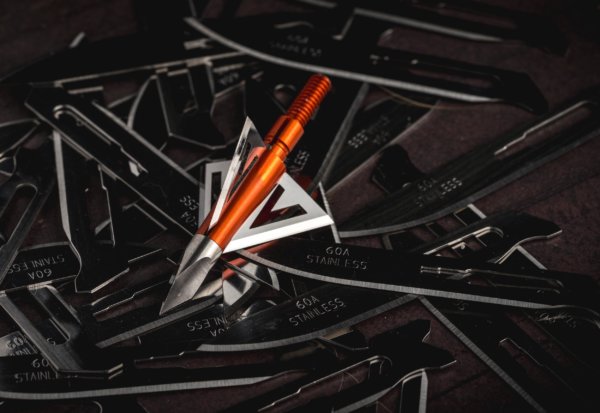
The Wasp Havalon HV fixed-blade broadhead.
Though you’re never guaranteed to break heavy leg bones, it doesn’t hurt to beef up your arrow and broadhead setup if you’re a hunter who likes to take quartering-to bow shots.
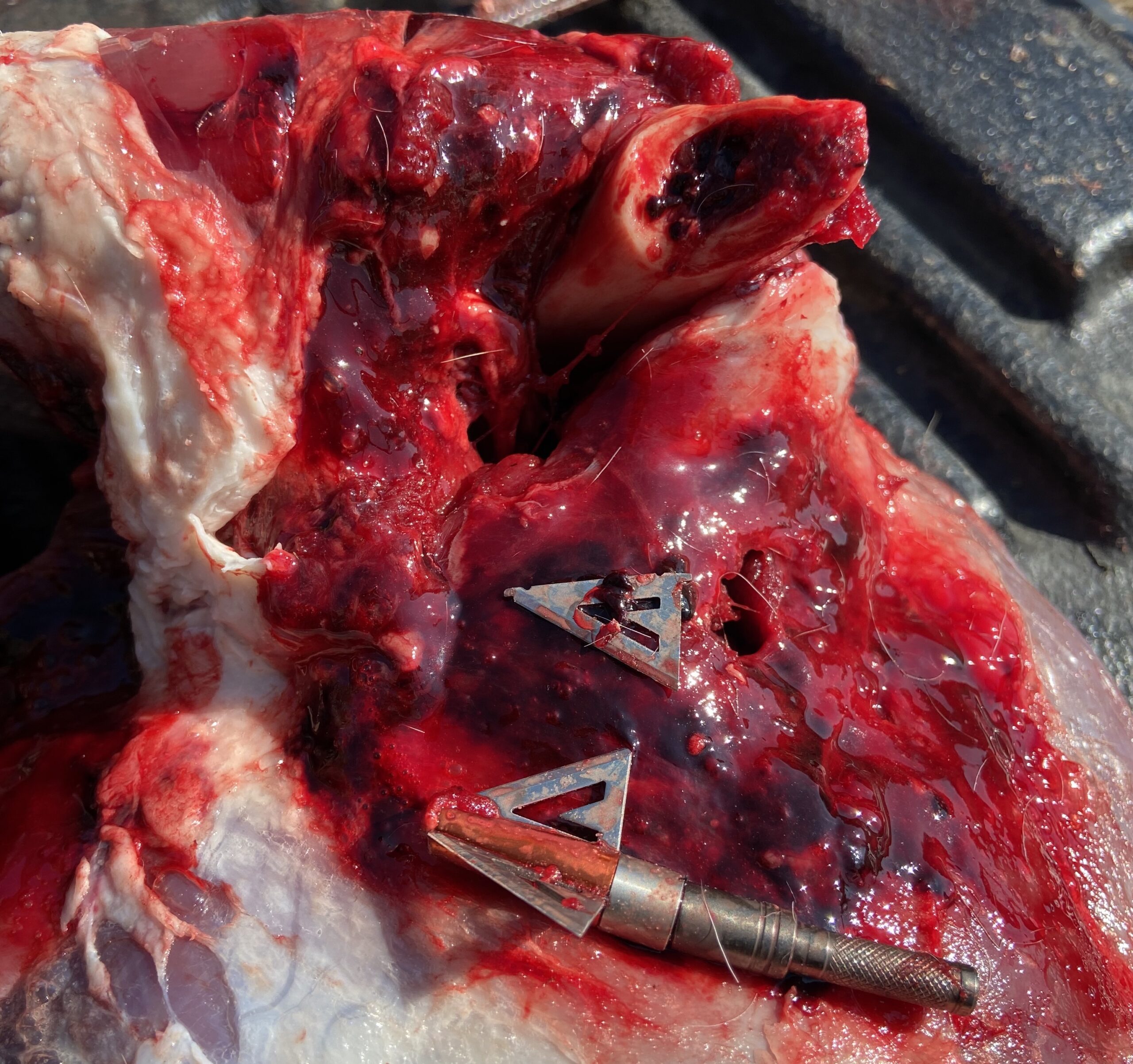
This details a broken leg bone on a mature whitetail buck with a Wasp Havalon HV 125.
A good fixed or cut-on-contact broadhead on the end of a heavy hunting arrow provides the momentum needed to have your best chance at breaking bone. Last fall, we had a customer send us this photo of a whitetail humerus that was broken on the off-side (the shot angle was quartering away) by a Wasp Havalon HV 125, which complemented a finished 500-grain hunting arrow. The customer was shooting a 60-pound Hoyt bow, with a draw length of 28 inches. The deer was a mature Tennessee buck that field-dressed an estimated 150 pounds.
The Havalon HV 125 is a great choice, but if you want an even heavier front of center and a cut-on-contact design, consider the all-new SharpShooter 200, the first single-bevel (right-hand) broadhead in the Wasp lineup. It weighs 200 grains.
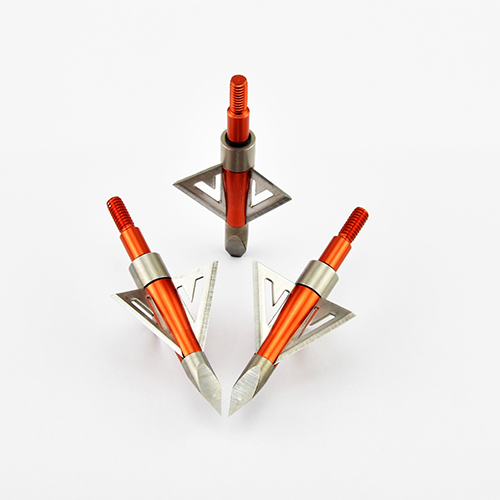
The Wasp Havalon HV 125 provides the sharp blades and rugged construction bowhunters need.
— Story by Wasp Archery Staff; Mule Deer image by John Hafner
View All Posts